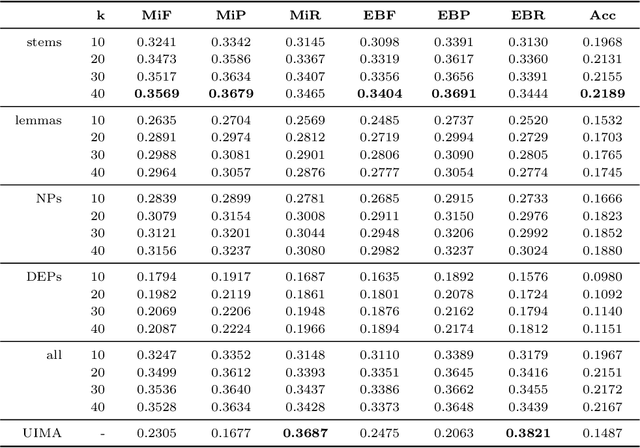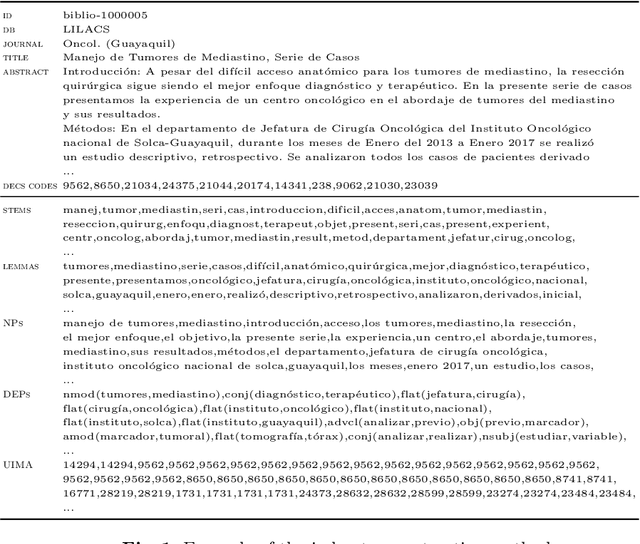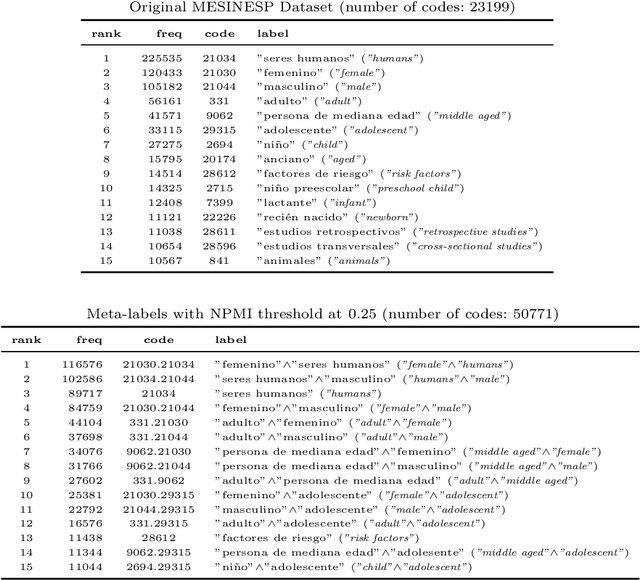Shuyuan Cao
Improving Large-Scale k-Nearest Neighbor Text Categorization with Label Autoencoders
Feb 03, 2024Abstract:In this paper, we introduce a multi-label lazy learning approach to deal with automatic semantic indexing in large document collections in the presence of complex and structured label vocabularies with high inter-label correlation. The proposed method is an evolution of the traditional k-Nearest Neighbors algorithm which uses a large autoencoder trained to map the large label space to a reduced size latent space and to regenerate the predicted labels from this latent space. We have evaluated our proposal in a large portion of the MEDLINE biomedical document collection which uses the Medical Subject Headings (MeSH) thesaurus as a controlled vocabulary. In our experiments we propose and evaluate several document representation approaches and different label autoencoder configurations.
* 22 pages, 4 figures
CoLe and LYS at BioASQ MESINESP8 Task: similarity based descriptor assignment in Spanish
Feb 02, 2024



Abstract:In this paper, we describe our participation in the MESINESP Task of the BioASQ biomedical semantic indexing challenge. The participating system follows an approach based solely on conventional information retrieval tools. We have evaluated various alternatives for extracting index terms from IBECS/LILACS documents in order to be stored in an Apache Lucene index. Those indexed representations are queried using the contents of the article to be annotated and a ranked list of candidate labels is created from the retrieved documents. We also have evaluated a sort of limited Label Powerset approach which creates meta-labels joining pairs of DeCS labels with high co-occurrence scores, and an alternative method based on label profile matching. Results obtained in official runs seem to confirm the suitability of this approach for languages like Spanish.
* Accepted at the 8th BioASQ Workshop at the 11th Conference and Labs of the Evaluation Forum (CLEF) 2020. 11 pages
 Add to Chrome
Add to Chrome Add to Firefox
Add to Firefox Add to Edge
Add to Edge